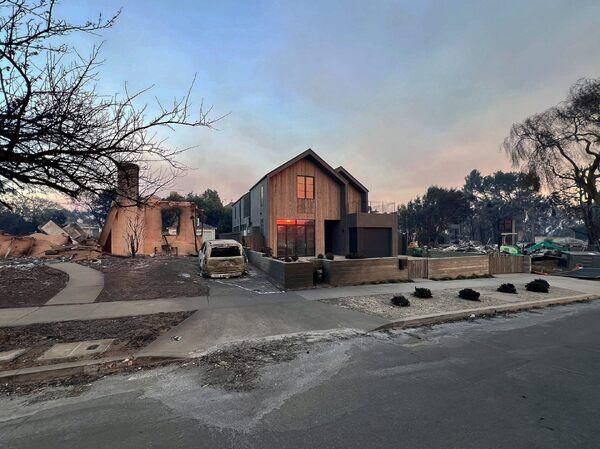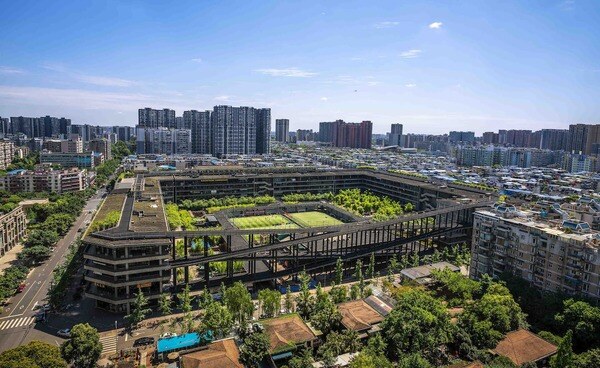Hyundai Motor Group has made a groundbreaking decision to invest $5.8 billion in a new manufacturing facility in Louisiana. This first-of-its-kind site marks Hyundai’s inaugural North American steel facility, establishing a fully integrated, made-in-America supply chain to support its automotive manufacturing operations across the United States.
The ultra-low carbon steel production plant will be located on approximately 1,700 acres in Donaldsonville, Louisiana, anchoring the RiverPlex MegaPark on the Westbank of the Mississippi River in Ascension Parish. At approximately 17,000 acres, RiverPlex is the largest undeveloped tract along the deep-water Mississippi River. Hyundai Steel Company (HSC), a member of Hyundai Motor Group, is expected to create more than 1,300 direct new jobs with an average salary of $95,000. Louisiana Economic Development estimates the project will result in about 4,100 indirect new jobs, for a total of 5,400 potential new jobs in the Capital Region.
“Hyundai’s decision to invest nearly $6 billion in Ascension Parish speaks volumes about Louisiana’s skilled workforce, robust infrastructure and our ability to compete for innovative manufacturing facilities,” Louisiana Governor Jeff Landry said. “This announcement makes clear that Louisiana’s manufacturing sector is roaring back, thanks to our historic tax reforms, our business-friendly approach and the many competitive advantages our state has to offer international powerhouses like Hyundai.”
HSC plans to import an estimated 3.6 million tons of iron ore annually to the facility. Completed coils will be shipped out via rail and truck to customers, including Hyundai Motor Company, Kia, and U.S. automakers. The largest portion of steel manufactured in Louisiana will be sent to Hyundai Motor Company’s vehicle manufacturing plants throughout the U.S. The mill is expected to produce 2.7 million metric tons of steel annually.
The state-of-the-art electric arc furnace (EAF) steel mill is expected to produce 70% lower emissions than traditional blast furnaces, aligning with the Hyundai Motor Group’s mission to..Read More
AEC News You Can Use Blog
Architectural, engineering and construction industry content you won't find anywhere else.
Exclusive content for the architectural, construction and engineering industries
- Tom Taubenheim
- May 7, 2025
- Tom Taubenheim
- April 23, 2025
- Tom Taubenheim
- April 9, 2025
- Tom Taubenheim
- March 26, 2025
- Tom Taubenheim
- March 13, 2025
- Tom Taubenheim
- February 12, 2025
- Tom Taubenheim
- February 5, 2025
- Tom Taubenheim
- January 30, 2025
- Tom Taubenheim
- January 22, 2025
- Tom Taubenheim
- January 15, 2025
LA Governor Jeff Landry & LED Secure $5.8 Billion Hyundai Steel Plant
Topics: Construction, Building Products, Steel
David Childs, architect of One World Trade Center, dies-AP
David Childs, the lead architect of the One World Trade Center skyscraper that rose from the site where the Twin Towers collapsed in New York City during the 9/11 attacks, has died. He was 83.
Childs died on Wednesday in Pelham, New York, from Lewy body dementia, which had been diagnosed in September, his son, Nicholas Childs said.
While he was perhaps best known for his work on One World Trade Center, considered to be the tallest building in the Western Hemisphere, Childs also was instrumental in other important projects, including a new master plan for the National Mall in Washington, D.C., an expansion of Dulles International Airport in Virginia and the 7 World Trade Center building in Manhattan, according to his firm, Skidmore, Owings & Merrill.
“David’s contribution to the firm was extensive and profound, and we will always be grateful to David for his leadership, his impact, and his friendship,” Skidmore, Owings & Merrill said in a statement. “We will miss him dearly and extend our condolences and deepest sympathies to his family.”
A fond memory that Nicholas Childs has was when his father drew a rendering of what the One World Trade Center property would look like while they were out having lunch in New York, some years after 9/11 but well before the plans were finalized.
“He picked up a paper napkin, took out a pen, and drew what became the ultimate design of the building on the napkin for me,” Nicholas Childs said in a phone interview Friday, adding that he still has the drawing.
He said his father was a civic-minded architect who would often use a quote by 20th century American-German architect Ludwig Mies van der Rohe — “God is in the details.”
“He cared deeply about those details and making something beautiful,” Nicholas Childs said. “But he also wanted to..Read More
Construction worker who fell to death wasn’t wearing harness-ANF
A newly released police report is shedding more light on what happened the day a construction worker fell to his death in downtown Atlanta last week.
At around 10:36 a.m. on Thursday, police were called to 327 Mitchell Street SW, an apartment building development that sits over The Gulch and is part of a project from Centennial Yards.
The victim, identified as 20-year-old Lauinier Bonilla, was working on the 19th floor when at least one witness saw him fall. The report said Bonilla wasn’t wearing personal protective equipment, including a safety harness.
Law enforcement later found safety glasses and a hard hat scattered on the ground.
Bonilla “succumbed to injuries consistent with falling from a significant height,” the report said. His body was removed from the scene by the Fulton County Medical Examiner’s Office.
The man’s employer said he would report the incident to the Occupational Safety and Health Administration (OSHA), according to the report.
Bonilla was employed by a subcontractor working for the CIM Group. Atlanta News First is working with a spokesperson at the CIM Group to get more details on what happened and what safety protocols were in place at the time of the accident.
According to Bonilla’s family, he was only on the job for two weeks. They said the subcontractor is paying to return his body to his home country of Honduras
Meanwhile, a video shared by another coworker shows workers leaving donations in a collection box set up inside the building to help the family cover funeral expenses.
“Because of the gusts of wind and the lack of safety equipment, a tragedy happened,” Nestor Ramirez, one of Bonilla’s coworkers, said. “The wind knocked him down off the ladder and he fell from the 19th floor.”
The developer of the high rise, CIM Group, shared the following statement: “Our heartfelt condolences are with all those who are affected and..Read More
Topics: Construction, Construction Accident
How Architects Are Designing for Disaster Resilience-TIME
On Jan. 7, architect Greg Chasen rushed to his childhood home in Pacific Palisades, a well-off Los Angeles neighborhood tucked between the mountains and the Pacific Ocean, to remove any flammables and turn on the sprinklers. “You could hear exploding propane tanks and see the flames reflected in the smoke. I was sure that fire was going to tear through overnight,” he says. At some point, there was nothing left to do but go home and wait.
At dawn the next day, Chasen jumped on his bike to inspect the damage, bracing for the worst. While just a few degrees of wind direction had saved his parents’ home from the flames, other streets weren’t as lucky. Next, he went to check on a house he had finished building for a friend only six months earlier. As he got closer, the magnitude of the destruction hit him—almost the entire neighborhood was gone. “More houses were going up in flames, and everything had this acrid smell of burning plastic,” he says. But there it was, the newly built two-story house, remarkably untouched. While 120 houses farther down the street had been transformed into piles of ashes, Chasen’s fire—resistant design had withstood the heat from the flames.
The wildfires that ripped through L.A. in January claimed the lives of 29 people and destroyed more than 16,000 structures. These types of disasters are only set to become more frequent and intense as climate change drives warmer and drier conditions. According to NASA, parts of the western U.S., Mexico, Brazil, and East Africa now have fire seasons that last more than a month longer than they did 35 years ago. And the U.N. estimates that the number of wildfires globally will increase by 50% by the end of the century.
Last year marked the first year global..Read More
Topics: Design, Architecture, Architect, Disasters
2025 Pritzker Prize Winner Liu Jiakun Honored-dwell
There’s much to be said about what an architecture award functionally does: The AIA Gold Medal recognizes cumulative impact; magazine awards provide opportunities for emerging practices by showcasing design talent or lesser-known projects. But the Pritzker Prize is a little different, better understood as a "Nobel Prize" for architecture that honors an expression of design values over one’s career. Recent awardees, for example, include Anne Lacaton and Jean-Philippe Vassal (2021), recognized for their devotion to adaptive reuse, and Frances Kéré (2022), whose focus on design and social justice has brought his practice significant acclaim.
This year, the 2025 Pritzker Prize has been awarded to Chinese architect Liu Jiakun, 69, founder of Jiakun Architects. He’s known for his process—understanding specific nuances of a particular site, including its social and material histories—and portfolio, which are defined by an ethos, not any particular style.
For many Americans, Jiakun’s work has flown under the radar. The Guardian’s Olly Wainwright notes that he is only the second Chinese architect to have won the prize in its 46-year history, working exclusively in China on cultural and academic institutions, as well as civic spaces, many of which inject dense, urban conditions with natural features. But what makes his work so unique is how each project cracks open the site’s unique heritage and challenges, producing buildings that, according to the award announcement, "philosophically [look] beyond the surface to reveal that history, materials and nature are symbiotic."
Perhaps this idea is most evident in his "Rebirth Brick Project" that began after the 2008 Wenchuan earthquake that destroyed nearly four-fifths of all buildings in the affected area. The research premise was simple: to reuse rubble as an aggregate mixed with cement and straw fibers in rebuilding after the disaster; since then, these bricks have been used throughout his work including the Shuijingfang Museum, which celebrates the world’s oldest..Read More
Topics: Design Awards, Architecture, Architect, Award
Contractors move first of World War II-era barracks at Ft McCoy-DVIDS
Contractors successfully moved a barracks building Jan. 22 from its resting area of 80-plus years to a new location on Fort McCoy’s cantonment area.
It was the first of five barracks buildings on the installation cantonment area's 1600 block that are being moved during January and February 2025 while the ground is frozen, Army Corps of Engineers officials said.
Devooght Building Movers of Manitowoc, Wis., is the contractor doing the building moves.
These buildings will eventually be reset at another area of the post so new construction can begin in their current location on new officer quarters.
Master Planner Brian Harrie with the Fort McCoy Directorate of Public Works said a plan was previously worked out with the U.S. Army Corps of Engineers for the contractor to move the five old barracks buildings to the 500 block of Fort McCoy in this move.
Four other barracks buildings also were moved from the 1600 block to other areas in 2023. Those four buildings are now operational in their new locations in the 1700, 1800, and 2100 blocks on the post.
In 2023 during the first barracks move operations, that was the first time an effort like that took place at Fort McCoy, Fort McCoy officials said.
Looking back, all five of the current buildings being moved were originally built 83 years ago in 1942 during the construction of Fort McCoy's cantonment area. An article in the Aug. 28, 1942, edition of The Real McCoy newspaper discussed the actual construction of the cantonment area and these buildings.
“Actual building and grading operations for the erection of the hundreds of buildings began March 20, 1942, although the original survey by a corps of engineers was made in July 1941. Authorization for construction was given by the War Department on Feb. 9, 1942.”
The article also states, “Each of the new buildings is of the most modern..Read More
Topics: Construction, Housing
HGTV’s ‘Fixer to Fabulous’ Hosts Settle Lawsuit Before Trial-US Weekly
HGTV stars Dave and Jenny Marrs have settled a remodeling lawsuit shortly before its scheduled trial date.
The Fixer to Fabulous hosts’ companies Jupiter Rentals and Marrs Construction were sued for breach of contract and warranty by couple Matthew and Sarah McGrath in February 2023, per local CBS affiliate 5NEWS.
The McGraths claimed that the Marrs failed to perform upgrades to their home. According to court documents obtained by the outlet, the McGraths alleged that the parties previously agreed to install missing cabinet hardware, replace broken windows and repair hardwood floors in the kitchen, among other repairs.
“As of August 28, 2022, not a single item on the list of repairs had been performed,” the complaint read, per 5NEWS. “Since that time, the defendants by and through Dave Marrs have attempted some of the repairs listed, but … several of the attempts to repair have caused more damage to the house.”
In Marss’ response, the twosome claimed that the McGraths refused to allow their companies’ agents or subcontractors access to the property.
Seven months after the lawsuit was initially filed, the court ordered mediation between the two parties. However the discussions “failed miserably” per a filing made by the plaintiffs.
In March 2024, a filing revealed that the McGrath’s property had nearly two dozen code violations after the house was inspected by another group of contractors. Dave, 44, reportedly stated in a deposition that he disagreed with the other home improvement specialists about the home’s alleged issues.
After not making any headway in the previous discussions, the Marrs and McGraths were scheduled to go to trial on Monday, January 27. However, 5NEWS reported that the parties reached a settlement on Friday, January 24.
“Come now plaintiffs, Matthew and Sarah McGrath, and defendants, Marrs Construction, Inc. and Jupiter Rentals, LLC, by and through their respective attorneys, and stipulate..Read More
Topics: Construction, Construction Lawsuit, Home Remodeling
60 lawsuits allege flaws in homebuilder D.R. Horton’s SC houses-Yahoo
Approximately 60 lawsuits have been filed in Richland, Lexington and Horry counties alleging construction flaws in residential houses built by major national homebuilder D. R. Horton.
The lawsuits allege various construction flaws relating to roofs, I-joists, flashing, siding, weather resistant barriers and cladding (protective coverings), depending on the house. Some defects allegedly can allow water intrusion, the lawsuits allege.
They charge D.R. Horton with negligence, breach of warranties and breach of contract, and in some cases, violations of South Carolina’s Unfair Trade Practices Act. In some cases, D.R. Horton sold homes to people knowing there were defects, some lawsuits allege. The plaintiffs seek actual and punitive damages.
D.R. Horton sold homes to plaintiffs “that required tight construction schedules with insufficient resources and labor to build a top-quality Residence,” says one lawsuit, filed by Sam and Kristina Prest about their Little River home.
D.R. Horton, a Fortune 500 company whose stock is traded on the New York Stock Exchange, describes itself as the largest housebuilder in the nation. It is headquartered in Texas.
The company is currently building houses in 125 markets in 36 states, including South Carolina, according to its 2024 annual report. In South Carolina, its projects are in areas around Charleston, Columbia, Greenville, Spartanburg, Hilton Head and Myrtle Beach.
After being contacted by The State, a D.R. Horton official emailed a statement saying it doesn’t comment on ongoing litigation.
But the official said the company “is aware of the claims and actively engaging with these homeowners and their counsel” and added, “We have retained independent third-party engineers and experts to investigate the claims.”
“D.R. Horton stands behind the homes we build and remains willing to work with our homeowners to address any valid and warrantable concerns,” the statement said.
The current lawsuits are not the first against D.R. Horton in South Carolina.
Last year, D.R. Horton, subcontractors and suppliers reached a $16.1 million settlement in a class action lawsuit alleging construction defects in more than 200 houses in a..Read More
Topics: Construction, Construction Lawsuit, Home Builder
AI-Powered Scan-to-BIM is Transforming Architectural Design-Geo Week
AI-powered design tools provide 25-30% efficiency improvements within architectural design workflows, streamlining generative design, improving sustainability, and supporting predictive analytics. According to a study, 68% architectural firms explored or implemented AI-driven tools by 2024.
Without the use of AI, Architectural Scan-to-BIM can be time-consuming, laborious, error-prone, and inconsistent.
Modeling intricate details and geometries from point cloud data can create roadblocks leading to BIM model inaccuracies. Moreover, larger architectural design projects can become difficult to manage due to lack of scalability. AI helps to streamline and manage the data and design workflow, reducing such issues.
For example, while Revit and Navisworks lack the presence of pre-built AI tools, integrations and third-party plugins can help bridge technology requirements.
Aurivus and PointCAD uses AI algorithms to convert point cloud data into 3D BIM model elements and can be integrated with Revit. Similarly, OpenSpace and Cintoo Cloud can support Navisworks in using AI for clash detection and site walkthroughs. Tools like 3D Repo, Verity and CupixWorks provide capabilities such as model federation, automated clash detection, and data validation.
In this article, we discuss the presence of AI-driven technology within the Scan-to-BIM workflow for architecture to automate tasks, enhance accuracy and facilitate data-driven insights for an AI-driven assessment.
How AI supports Scan-to-BIM services in architectural design
Artificial Intelligence (AI) has boosted Scan-to-BIM services significantly through improvements in accuracy, efficiency and automation.
AI-based algorithms assess complex and vast point cloud data from laser scans to identify and classify objects, such as windows, walls and other structural members. This removes the requirement for manual modeling, which can be time-consuming.
Additionally, AI-driven tools help architecture and design teams automatically flag clashes and ambiguities within the Point Cloud to BIM models and scanned realities. This ensures a greater level of accuracy and reduces error risks during on-site construction.
Overall, automation of repetitive tasks and delivery of valuable insights based on data analysis with AI makes Scan-to-BIM workflows seamless, leading to..Read More
Topics: Design, BIM, AI Machine Learning
10 Buildings in Wisconsin That Are Older Than The State Itself-UNN
Cabins, homes, military compounds, and outhouses, oh my! The oldest buildings in Wisconsin date back to the 1700s and run the entire utility gamut.
Wisconsin officially became a U.S. state in 1848, but many of its oldest buildings actually predate its statehood. This goes for many states in the Midwest, the South, and New England, as these were the first areas that Europeans settled on before moving westward. Naturally, this means that Wisconsin and other Eastern states have some of the oldest buildings in the nation, often dating back to the mid-to-late 1700s and early 1800s, while the oldest structures in Western states like Nevada only date back to the mid-nineteenth century and later.
With Wisc. possessing so much rich history, we knew we had to take a closer look at which buildings across the Badger State have stood the test of time and are still standing nearly two centuries later, in some cases. For instance, one of the most interesting buildings in the state is the St. Joan of Arc Chapel; however, this building was erected in France circa the fifteenth century and didn’t cross the Atlantic to reach New York and later Marquette University in Wisconsin until the 1900s. While it’s certainly a sight to behold, we’ve excluded it from our actual list since it wasn’t originally built in Wisconsin, but if you can go see it in person, we recommend it. It’s the oldest building in the state, and it’s both gorgeous and carries such a storied past.
With that established, let’s look at 10 of the oldest buildings in Wisconsin, from cabins and hotels to military buildings and even an outhouse (yes, you read that right).
1. Roi-Porlier-Tank Cottage (c. 1776)
Address: 2640 South Webster Ave, Green Bay, WI 54301
The Roi-Porlier-Tank Cottage is the Badger State’s oldest still-standing building, enduring in Wisconsin since the mid-1770s (aka prime Revolutionary War time). It hasn’t always occupied the same space, however..Read More
Topics: Housing, Architecture, Wisconsin, Historic
Heading Module -CTA Title
Lorem ipsum dolor sit amet, consectetur adipiscing elit. Suspendisse varius enim in eros elementum tristique.
Lorem Ipsum
Aenean leo ligula, porttitor eu, consequat vitae, eleifend ac, enim. Aliquam lorem ante, dapibus in, viverra quis. Aenean leo ligula, porttitor eu, consequat vitae, eleifend ac, enim. Aliquam lorem ante, dapibus in, viverra quis










